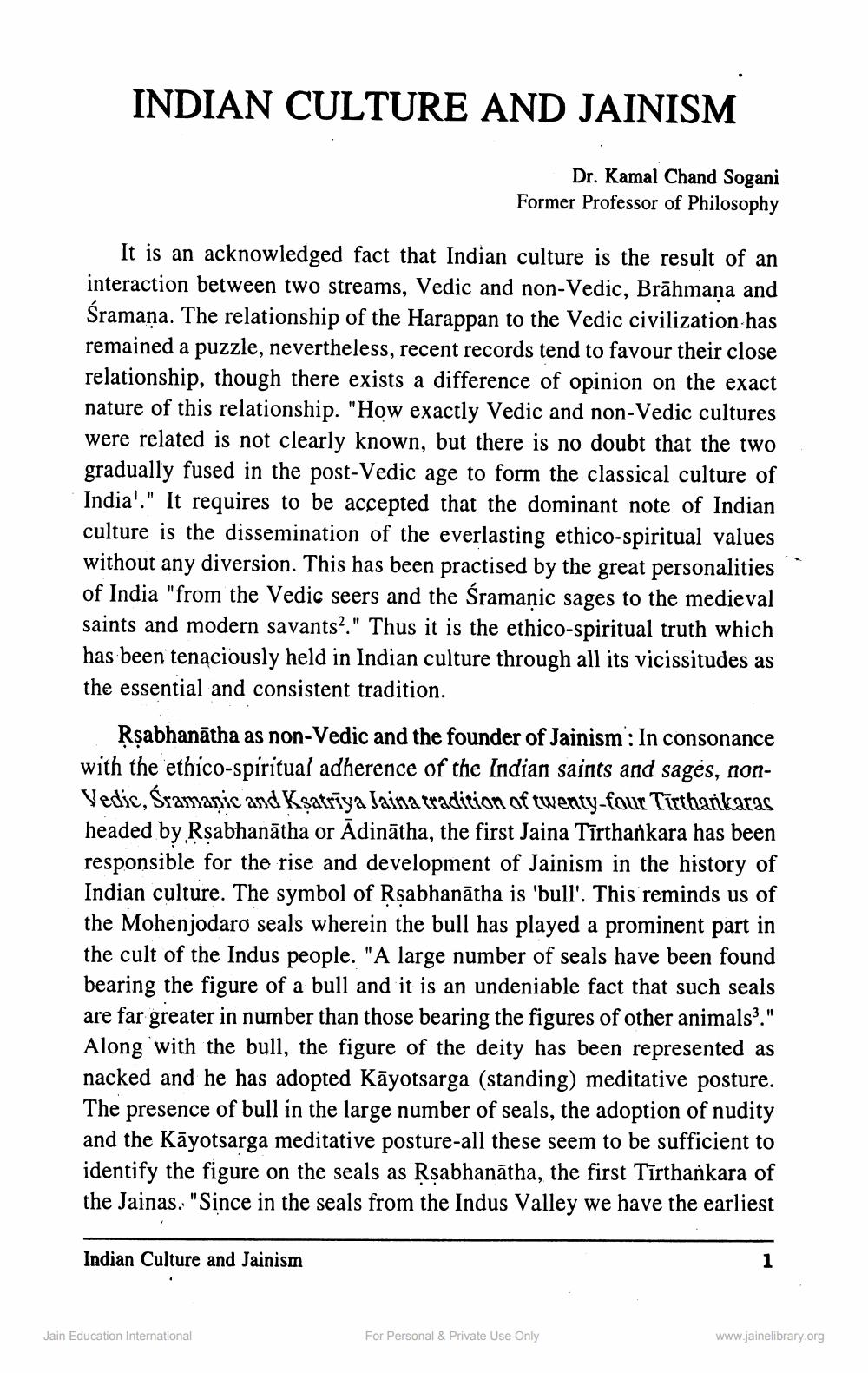Book Title: Indian Culture and Jainism Author(s): Kamalchand Sogani Publisher: Jain Vidya Samsthan View full book textPage 8
________________ INDIAN CULTURE AND JAINISM Dr. Kamal Chand Sogani Former Professor of Philosophy It is an acknowledged fact that Indian culture is the result of an interaction between two streams, Vedic and non-Vedic, Brāhmaṇa and Śramana. The relationship of the Harappan to the Vedic civilization has remained a puzzle, nevertheless, recent records tend to favour their close relationship, though there exists a difference of opinion on the exact nature of this relationship. "How exactly Vedic and non-Vedic cultures were related is not clearly known, but there is no doubt that the two gradually fused in the post-Vedic age to form the classical culture of India'." It requires to be accepted that the dominant note of Indian culture is the dissemination of the everlasting ethico-spiritual values without any diversion. This has been practised by the great personalities of India "from the Vedic seers and the Śramanic sages to the medieval saints and modern savants2." Thus it is the ethico-spiritual truth which has been tenaciously held in Indian culture through all its vicissitudes as the essential and consistent tradition. Rṣabhanatha as non-Vedic and the founder of Jainism: In consonance with the ethico-spiritual adherence of the Indian saints and sages, nonVedic, Sramanic and Ksatriya Jaina tradition of twenty-four Tīrtharikaras headed by Rṣabhanātha or Ādinātha, the first Jaina Tīrthankara has been responsible for the rise and development of Jainism in the history of Indian culture. The symbol of Rṣabhanatha is 'bull'. This reminds us of the Mohenjodaro seals wherein the bull has played a prominent part in the cult of the Indus people. "A large number of seals have been found bearing the figure of a bull and it is an undeniable fact that such seals are far greater in number than those bearing the figures of other animals3." Along with the bull, the figure of the deity has been represented as nacked and he has adopted Kayotsarga (standing) meditative posture. The presence of bull in the large number of seals, the adoption of nudity and the Kayotsarga meditative posture-all these seem to be sufficient to identify the figure on the seals as Rṣabhanatha, the first Tīrthankara of the Jainas. "Since in the seals from the Indus Valley we have the earliest Indian Culture and Jainism Jain Education International For Personal & Private Use Only www.jainelibrary.orgPage Navigation
1 ... 6 7 8 9 10 11 12 13 14 15 16 17 18 19 20 21 22 23 24 25 26 27 28 29 30 31 32 33 34 35 36 37 38 39 40 41 42
